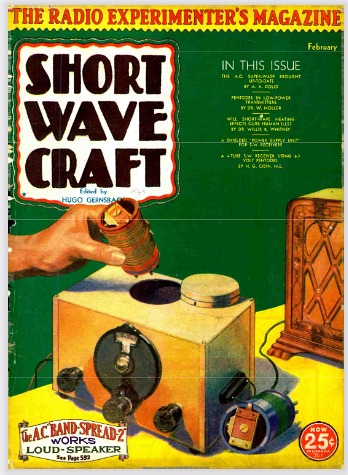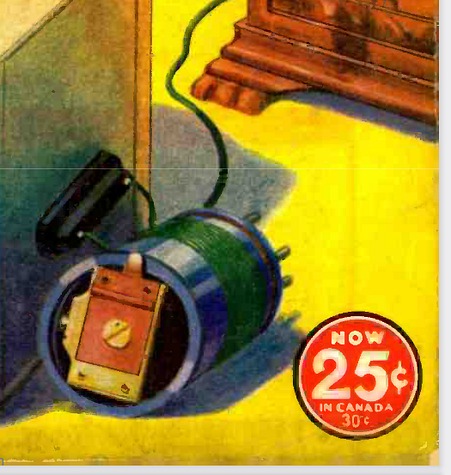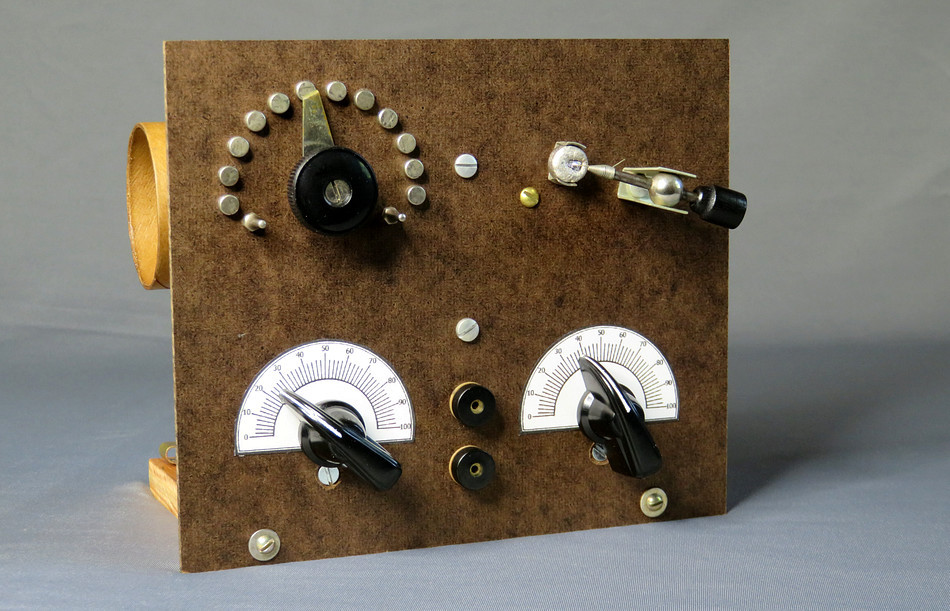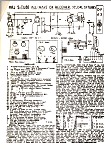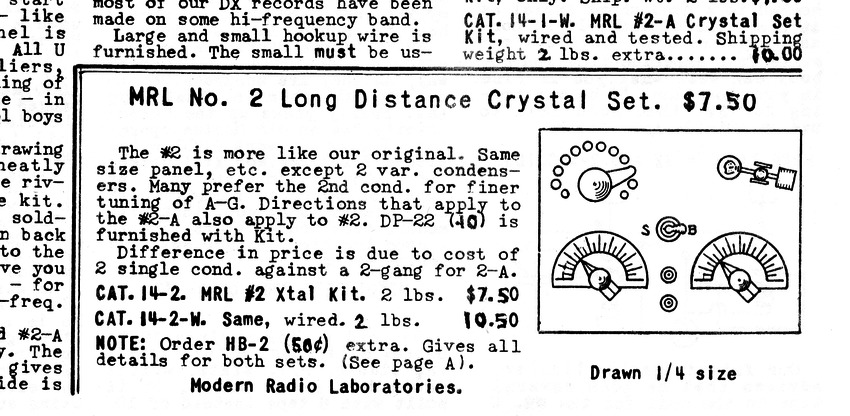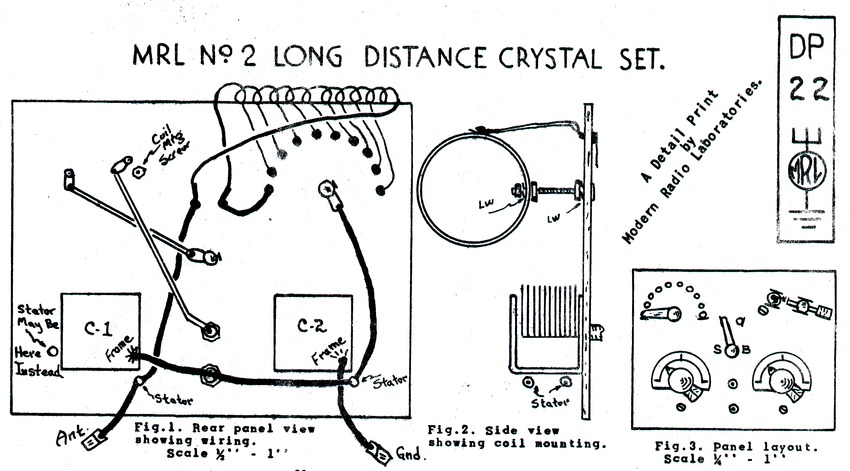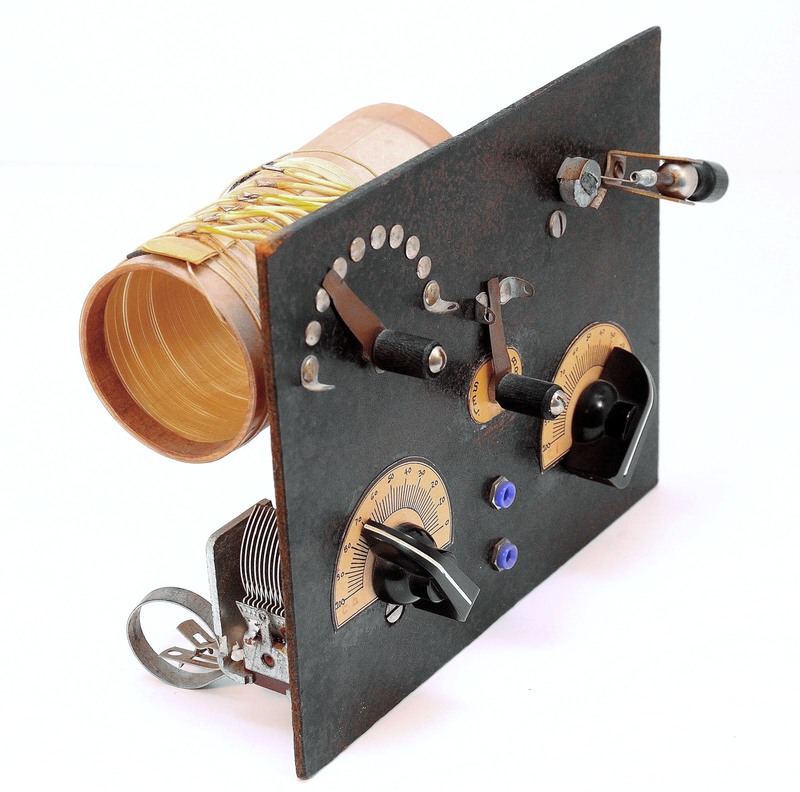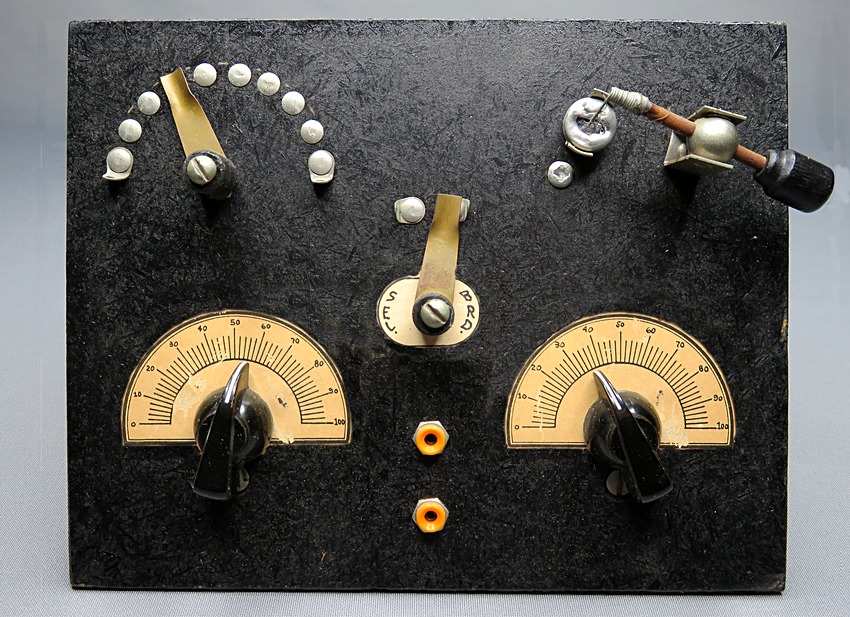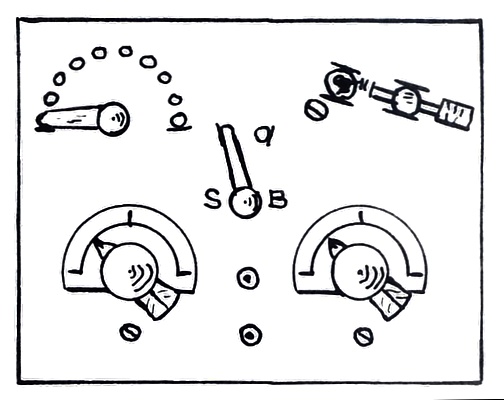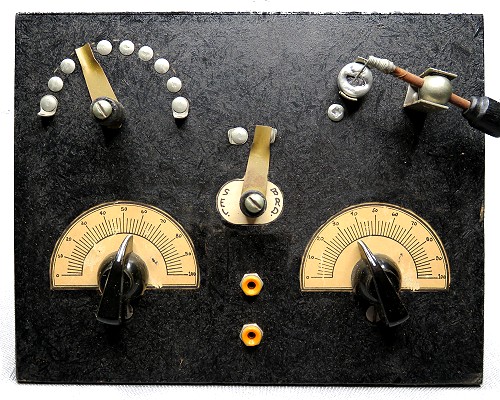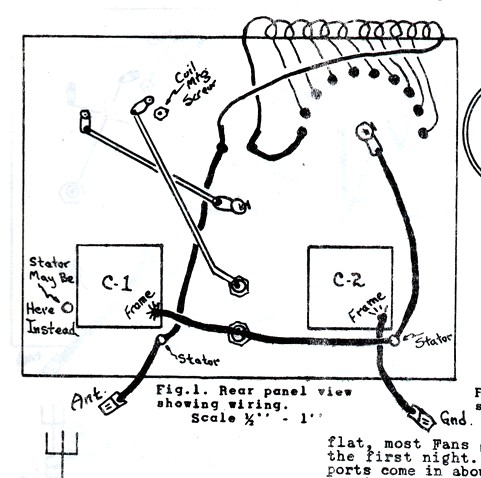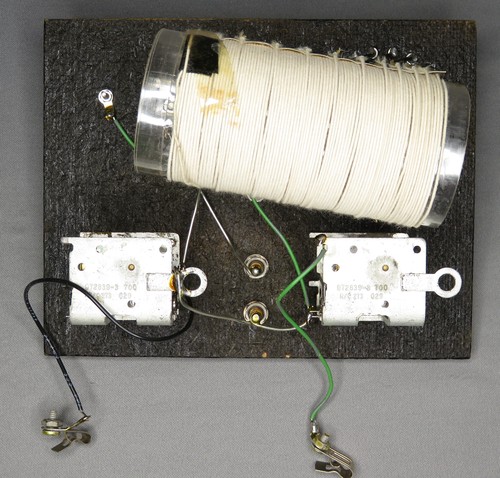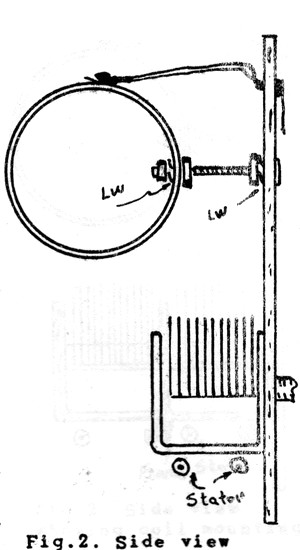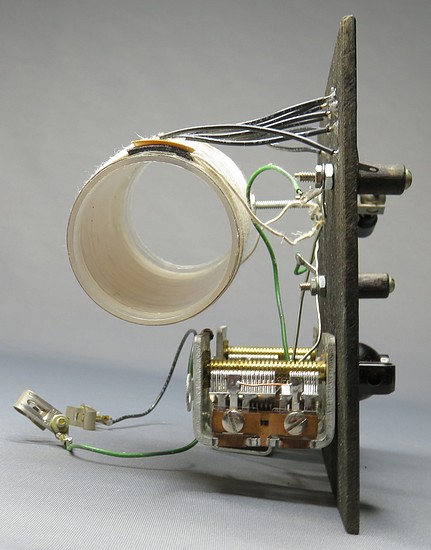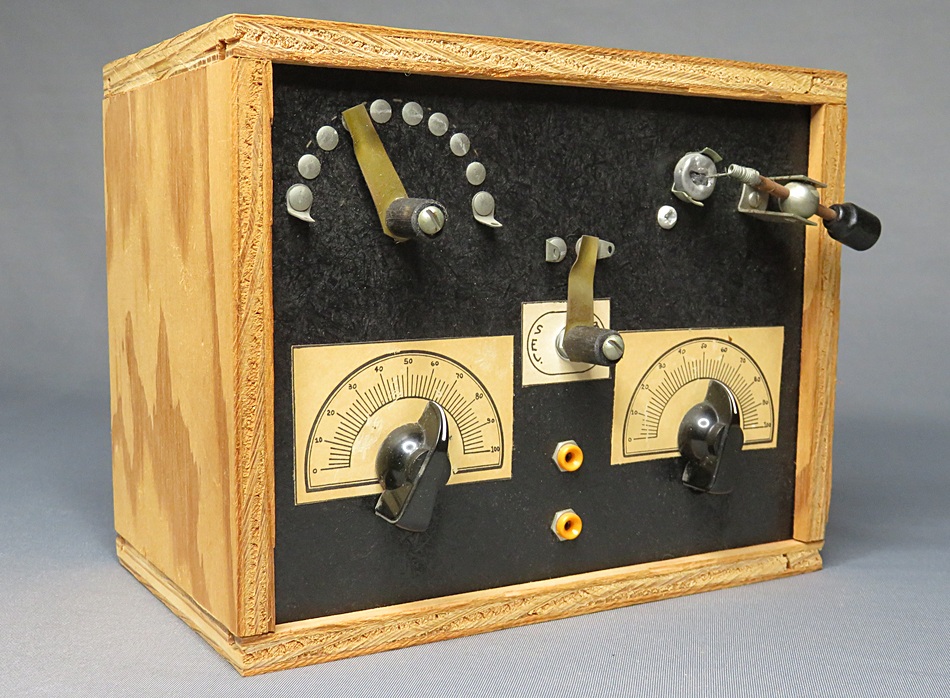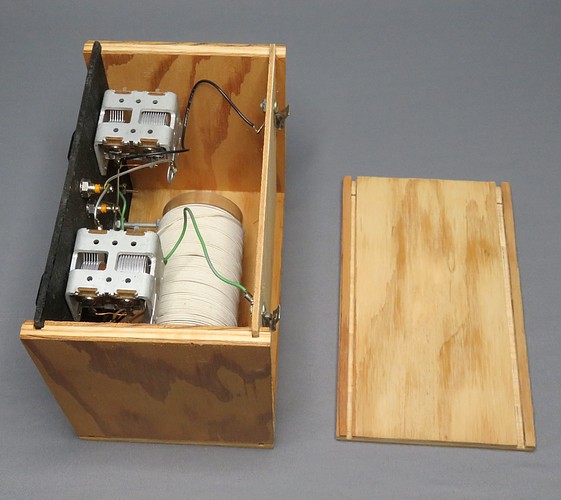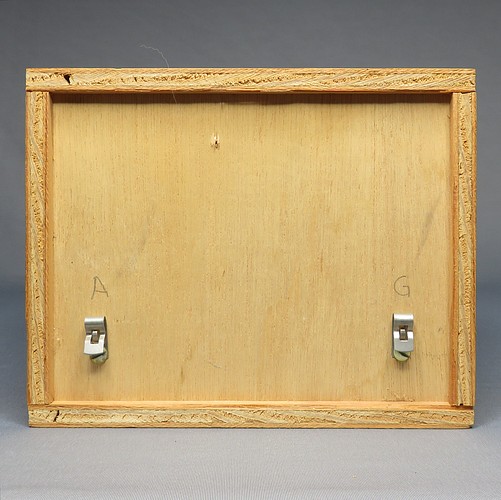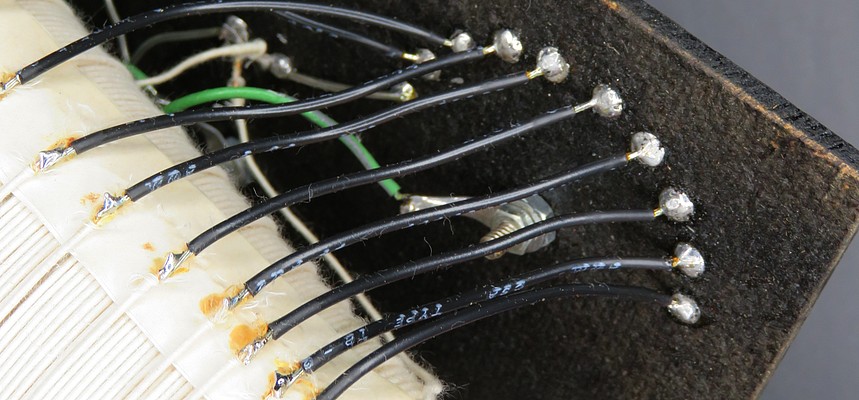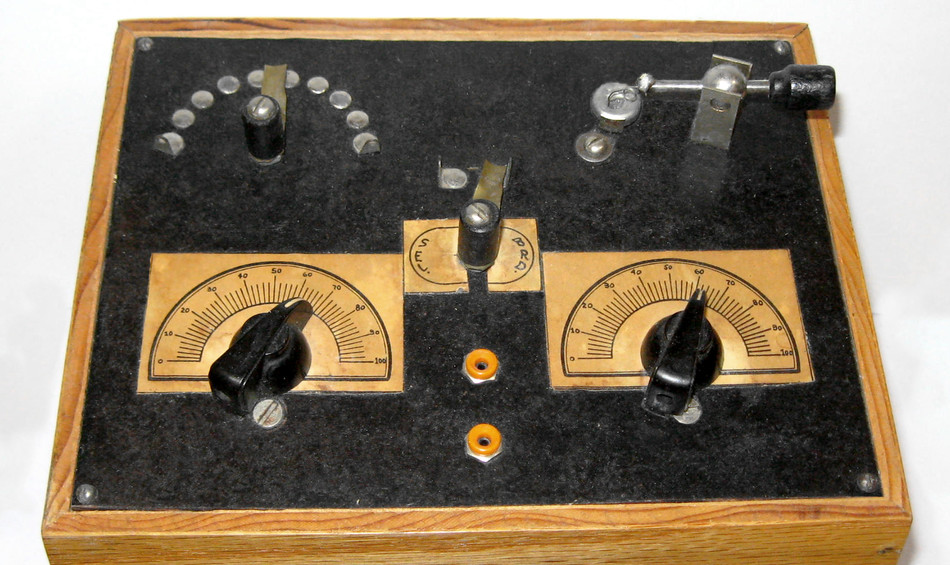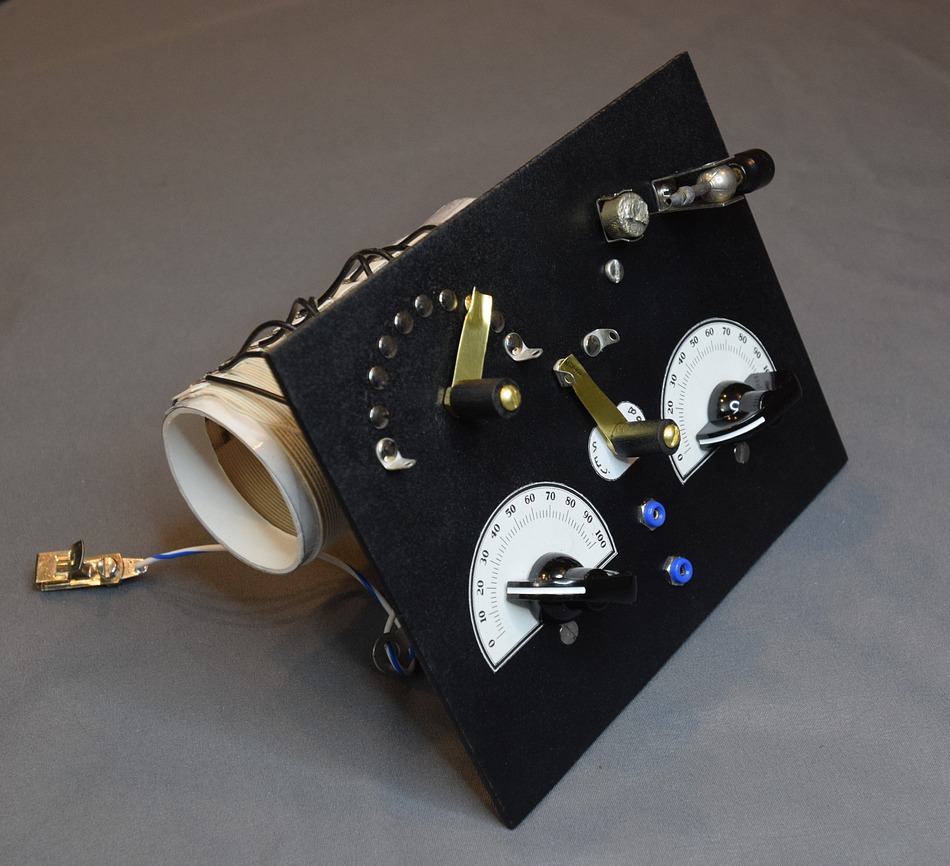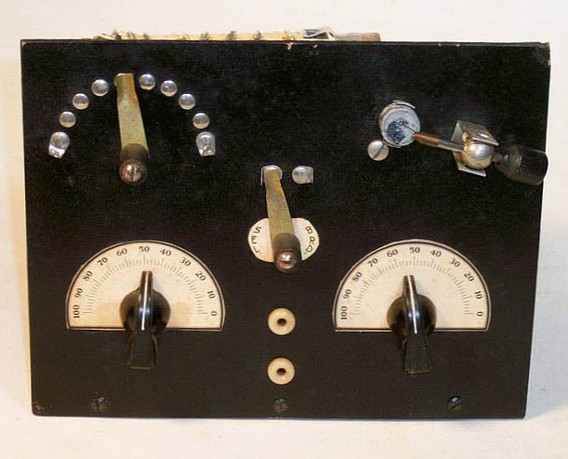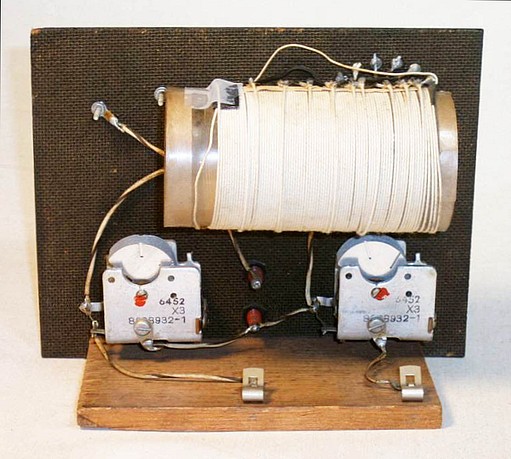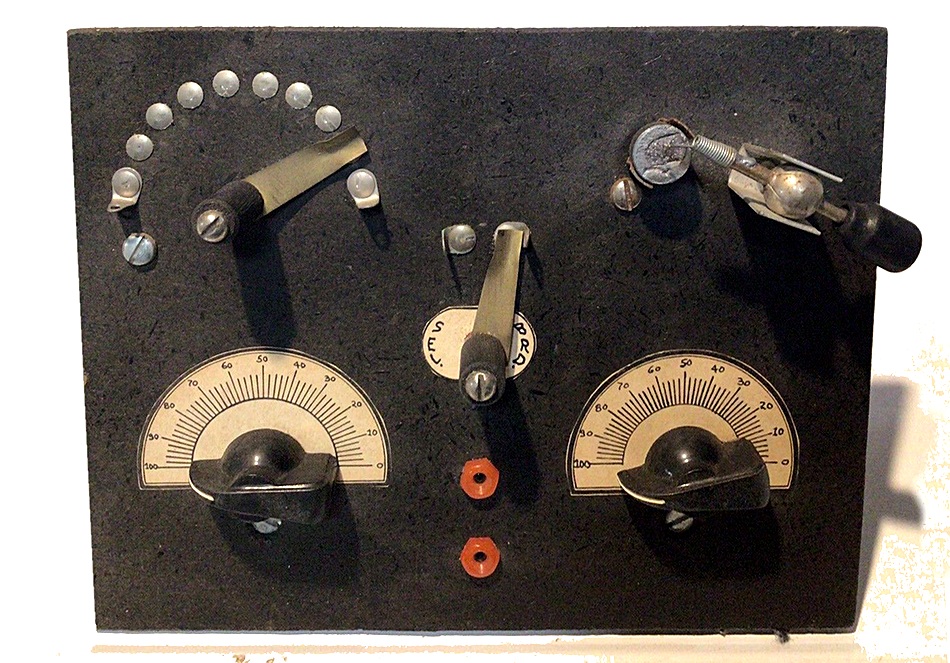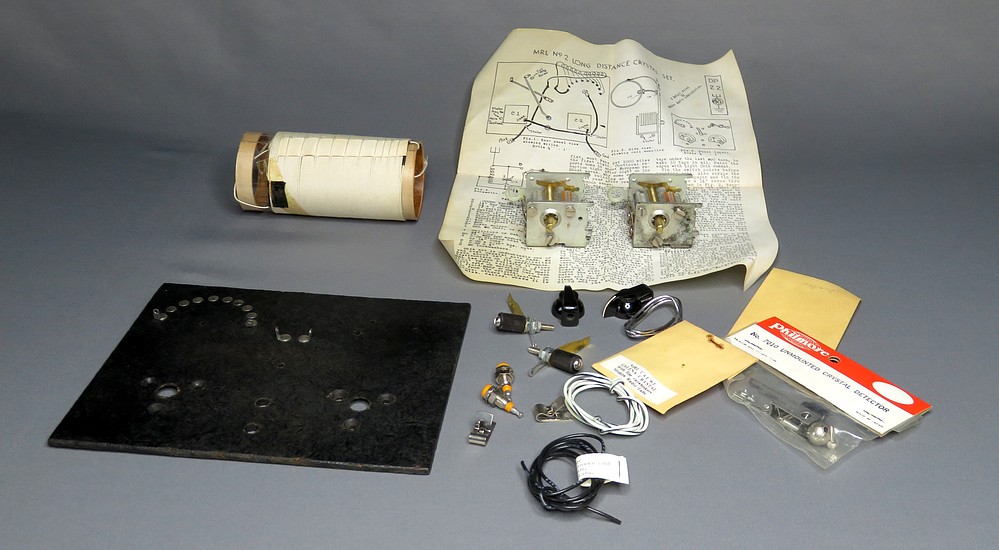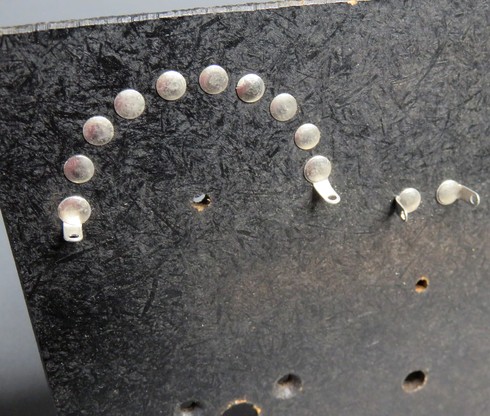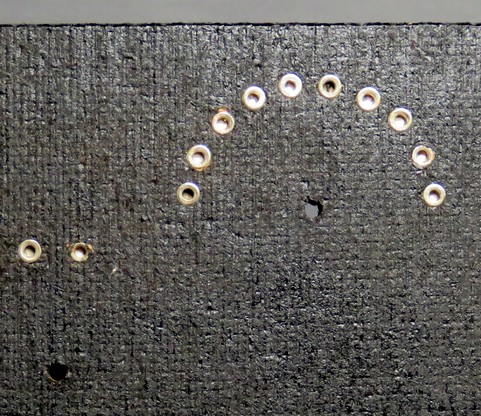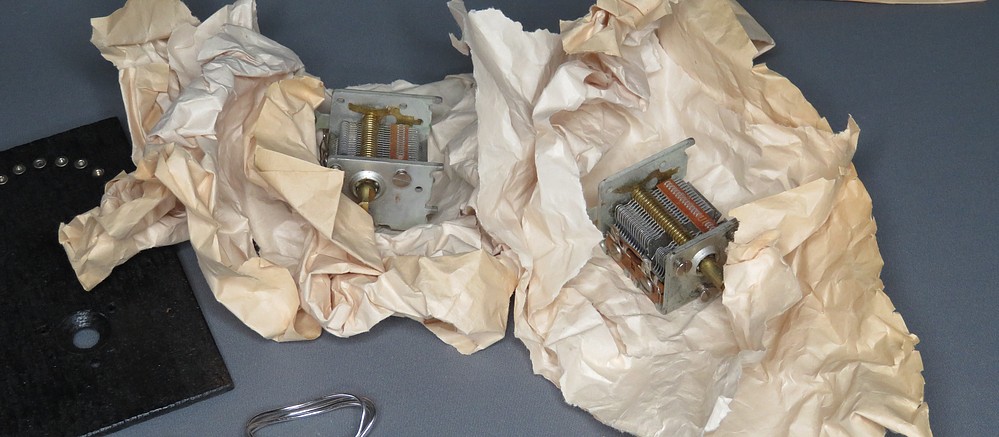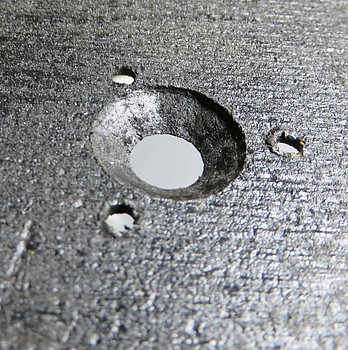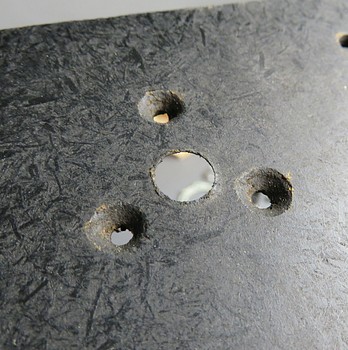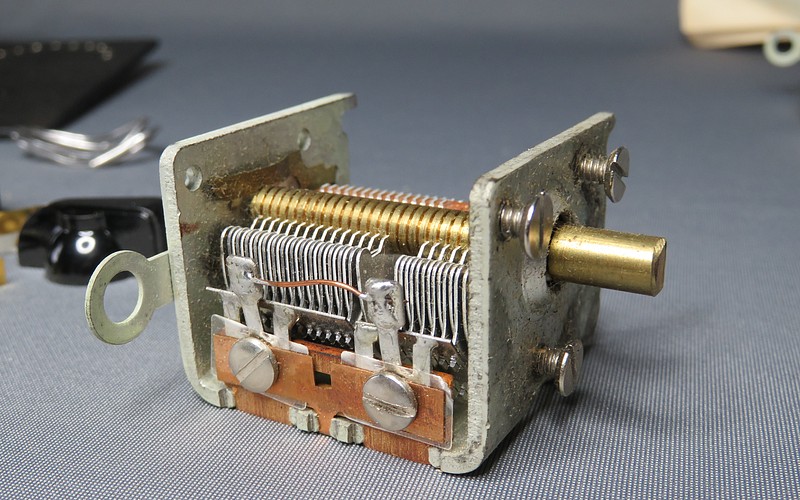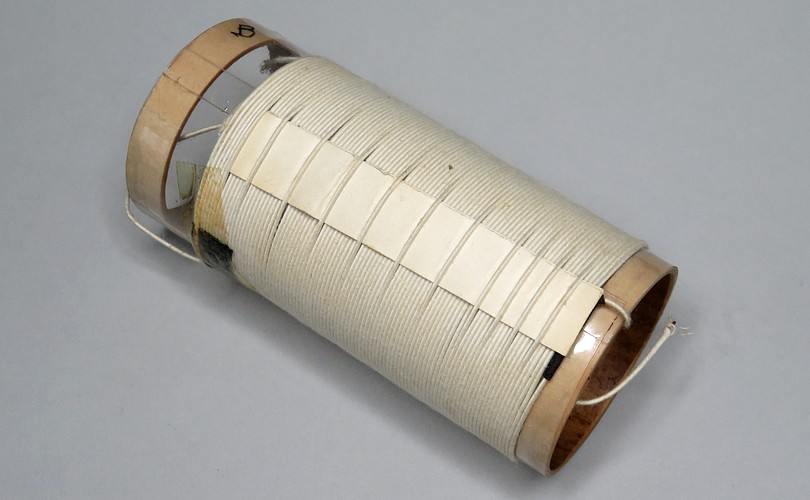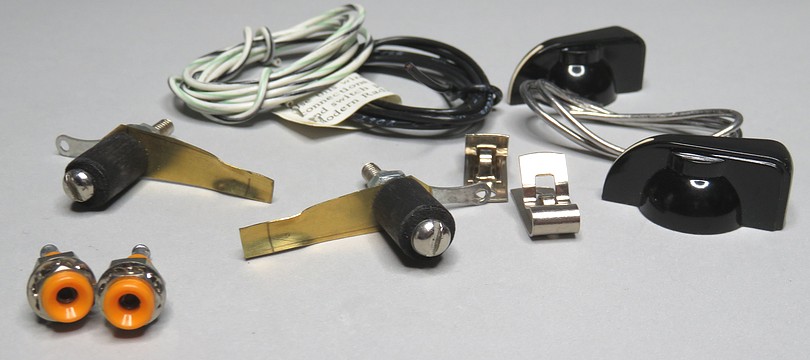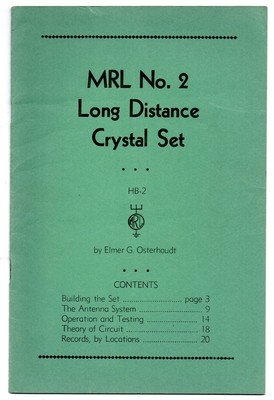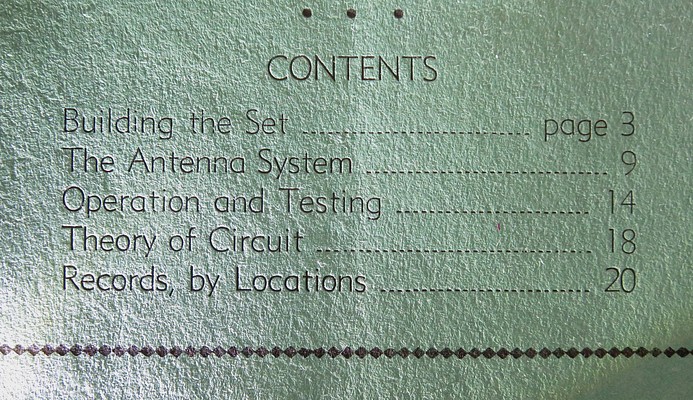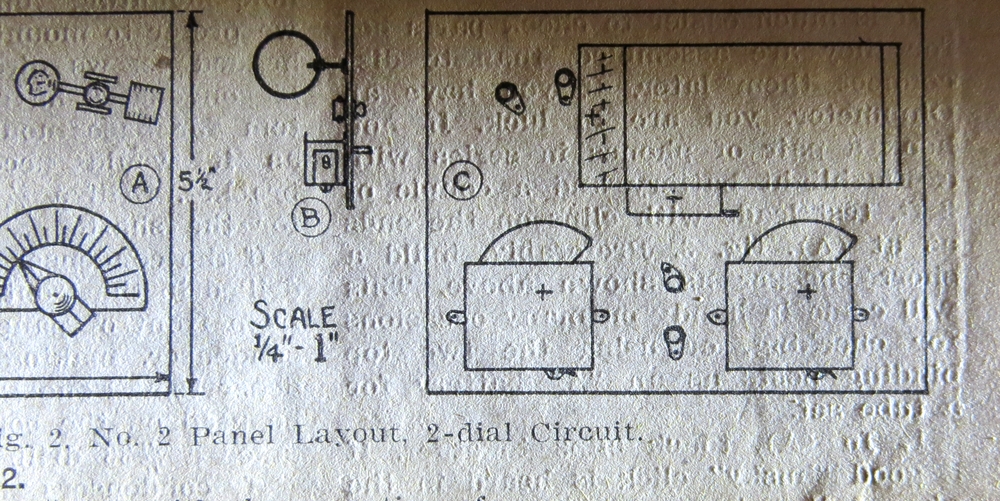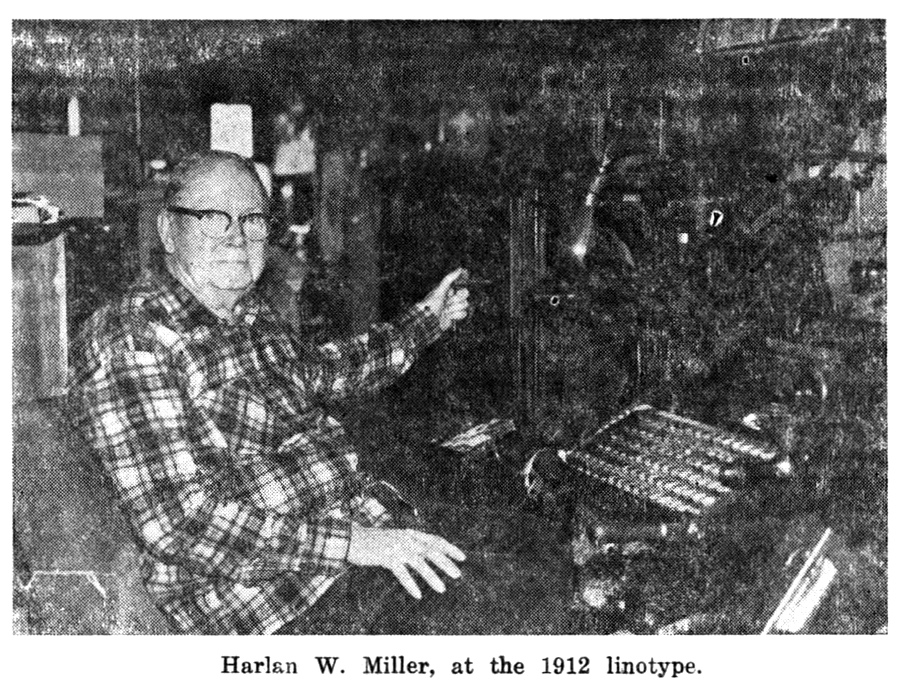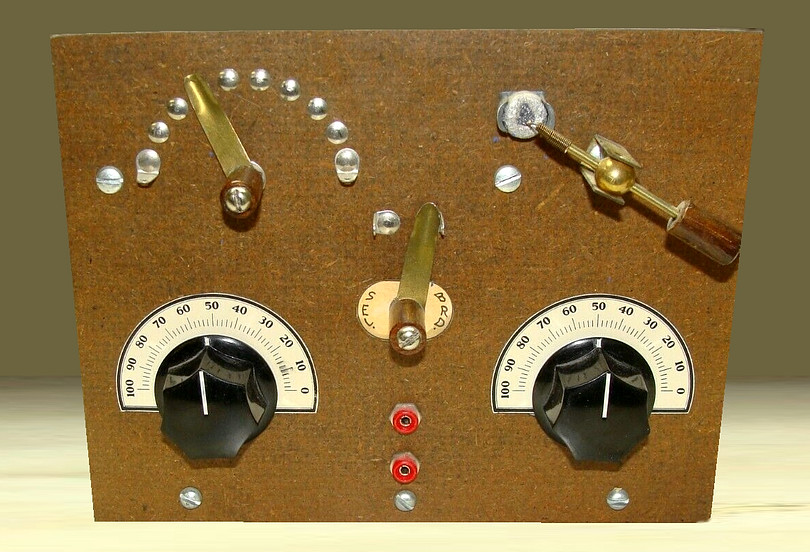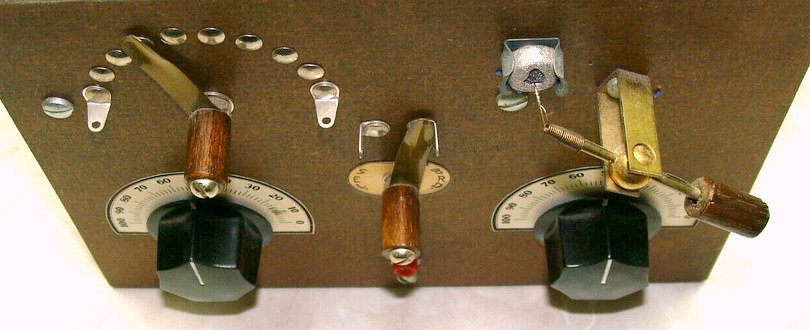|
|
|
|
|
|
|
|
|
|
The very first Modern Radio Laboratories
advertisement.
Submitted to Short Wave Craft in 1932, it appeared in
the February 1933 issue. |
|
|
|
|
|
Elmer stated that at the time he placed
this advertisement he knew of no other crystal set ad. It
was a gamble that apparently paid off. For 25¢
you got a "Blue print" of a crystal set, not the actual
crystal set. For the same 25¢
you had already obtained the copy of Short Wave Craft, which
was filled with radio diagrams.
25¢ in 1932 had the buying power of $5.90 in the year 2025.
For the equivalent of $5.90 you got a piece of paper!
However, it wasn't the paper that was important, it was what
was ON the paper - plans for a remarkable and simple new
crystal set design.
It worked out better than he expected. According to Elmer,
"the floor was covered with letters with 25¢ in them." This
was three years into the Great Depression, so it may have
seemed a fortune. Of course, the floor being "covered" is
subject to interpretation. The address was the radio shop,
not the Osterhoudt residence, and it was probably just one
spot on the floor, not the entire floor. Why were the
letters on the floor to begin with?
In the beginning, MRL didn't carry any crystal radio parts.
The mail order business was created by customer demand.
Elmer had been making and selling plug-in coils,
but these weren't designed for crystal radios. Apparently,
the very first (and only) MRL mail-order product that wasn't
a plug-in coil was the blue print for the MRL No.1 Crystal
Set. However, after people wrote in for the plans they then
wanted parts, "So, away we went!" as Elmer related.
By 1934 Elmer had published 10 more blue prints, six
editions of MRL OSCILLATOR, and at least three editions of
RADIO BUILDER.
In HB-17 "MRL 20 Crystal Set Circuits," the first circuit is
the MRL No.1 Crystal Set. Under the diagram Elmer wrote,
"This is the set that started us in the mail order
business."
|
|
|
|
The MRL No.1 DX Crystal Set, circa 1932. Recreated
set built in 2020.
"This is the set that started us in
the mail order business." |
|
|
|
|
| |
|
|
| Advertisement in the May, 1933
issue of Short Wave Craft. |
| |
|
Note: MRL Detail Print
No. 63, Two Tube All Wave DX Receiver, seems to be an
update to the Blueprint advertised above. It is the only
2-Tube MRL circuit found that picks up shortwave and uses
vacuum tubes available in 1933. Unfortunately, it is not a
copy of the Blueprint. According to Radio Builder # 25,
DP-63 was revised on November 1, 1946.
Click on the icon to the right to view DP-63. |
|
|
| |
|
|
|
|
|
|
MRL ad from Radio magazine
June, 1933. |
|
|
|
|
|
|
MRL ad from Radio Craft
magazine, also from June, 1933. You now get
Blueprints for six more crystal sets.
The last MRL ad with the 23rd Avenue address
appeared a month later. By this time the Great
Depression had wiped out thousands of banks and
businesses.
The Modern Radio Laboratories store also closed, another victim of the
economy. |
|
|
|
|
MRL ad from Radio Craft
magazine, November, 1933. This same ad appeared in
the January 1934 edition of Short Wave Craft
but the word TUBELESS was added to CRYSTAL SET. This
would have cost Elmer 10¢
for the extra word but he omitted the name of the
state to compensate. See similar ad below.
The new address was the location of Mabel's parents
house, which had been converted into two apartments.
Elmer and Mabel lived there for five
years during the Great Depression. |
|
|
|
|
MRL ad from Radio World
magazine March 10, 1934. The ad now boasts "1800
miles."
The same ad appeared in several
1933 and 1934 issues of Short Wave Craft.
By September 1934 the text stated "Blueprint, 10
others," so Elmer had added four more.
|
|
Why the word TUBELESS? In the May 1934 issue of
Radio Craft, Hugo Gernsback wrote that for some
time there had been accounts of phantom TUBELESS
radios that didn't exist. They were either
deliberate fakes or delusions of some inventor, but
reports had appeared in various newspapers and the
general public was eager to acquire the new
invention. Looks like Elmer took advantage of the
situation, and the word "TUBELESS" would be
eye-catching in the early 1930s. |
|
|
|
|
|
|
|
|
MRL ad from Radio magazine
June, 1934 showing where the distance "1800 miles"
originated. KDKA was located in Pittsburgh,
Pennsylvania, and transmitted on 980 kHz in 1934.
What city in Montana was the report made from? The
distance between Mc Leod Montana and KDKA was 1800 miles.
In October of 1936, an MRL advertisement in Radio
Craft boasted of a "SW Crystal Set" with a record
distance of 4250 miles. This narrows down the year
the MRL No.2 set was developed, as this distance
could only be achieved on the shortwave band. 4250 miles is the
distance between Lansing, MI and Berlin. |
|
|
|
|
|
|
|
From Radio Craft March 1944.
The distance is now 5300 miles. The received
transmission may have been "Radio Moscow" on a No. 2
set. The distance between Kansas City, Kansas and
Moscow is 5300 miles. Notice the address is barely
readable. |
|
|
|
|
|
|
|
From Radio Craft June 1944.
Elmer may have designated the 'X' to track which
issue was generating sales, since the March issue
had a smeared address. There were no other MRL ads
in Radio Craft for 1944 or 1945. The next ad
appeared in the November 1946 issue. |
|
|
|
|
|
|
There are a few rare ads where Elmer
offered a free catalog without a subscription to
"Radiobuilder." This one is from Popular
Mechanics, February, 1956.
MRL Mystery:
The company name in the advertisements evolved from
"Modern Radiolabs" to "Laboratories." Why didn't
Elmer ever use "MRL" as the company name? |
|
|
|
|
|
MRL No. 2 CRYSTAL RADIO |
|
|
|
|
|
| The first radio
plans sold by MRL were for the No.1 Crystal Set, described
in Hand Book 17 and Detail Print 26. However, the greatest
legacy of MRL is probably the No.2 Crystal Set, which Elmer
"invented" in 1932 and eventually sold as a kit. Oddly, the
catalog entry for the No. 2 Crystal Set is just a footnote
at the bottom of page K-1, shown above. |
|
Catalog page K-1 is an entire page devoted to the MRL No.
2-A single dial set. Elmer states that both sets have been
made and improved upon since 1933.
At the bottom of the catalog page it states that HB-2 (or
Hand Book 2) "MRL No.2 Long Distance Crystal Set" is 50¢
extra. It has a copyright date of 1945. In the back of HB-2
there are five pages of testimonials in a closely typed
small font. Elmer claimed to have hundreds of reports in a
stack six inches thick.
Later, he published Detail Print 22, "MRL No. 2 LONG
DISTANCE CRYSTAL SET". In this DP Elmer wrote that the size
of the stack of testimonials was then 12 inches thick. The
date of DP-22 is not known, but it was included in the MRL
DETAIL PRINT FILE, dated 1958.
The stack must have at least doubled again by the time of
his death in 1987. |
|
|
|
|
|
This is the top of
Detail Print number 22. In typical Elmer Osterhoudt fashion,
the drawings are made face on or a side view without the
slightest angle. The drawings in HB-2 are the same; squares,
circles and lines.
|
|
|
|
|
|
|
|
An MRL No. 2 Long Distance Crystal Set.
|
|
|
|
|
|
MRL No. 2 front panel. |
|
|
|
|
|
The drawing suddenly comes to life once you know what
you are looking at! |
|
|
|
|
|
|
|
|
The front panel is 5 1/2" by
7". The radio was not sold with a base.
|
|
|
|
|
|
|
This No. 2 was built into a plywood box. |
|
|
|
|
This radio was
built by a Bob Dildine of Santa Rosa, California in the
early 1970s. He did a nice job on the radio and on the box.
The bottom and sides of the box are kerfed so everything
slides together without fasteners or glue. You just slide
the bottom off and both the radio and back panel slide out.
Because it was housed in the box it is pretty much pristine
inside. |
|
|
|
|
|
Coil connections to the switch taps. |
|
|
|
|
|
|
Another MRL No. 2, also in a wooden box. This was
built in 1977 by Sloane Freeman. |
|
|
|
|
|
|
Replica built from scratch by Vic Rodriguez in 2022. |
|
|
|
|
|
|
Another MRL No. 2. These are getting rare. Only three
have appeared on ebay in the last few years. |
|
|
|
|
|
This one is from ebay, January 2023. Two different
MRL dial scales How did that happen?. |
|
|
|
|
|
|
In April of 2023 this MRL No. 2 sold on ebay for
$187.50 with shipping. |
|
|
|
|
Want to see something REALLY rare? |
|
|
|
|
An unbuilt MRL No. 2 Long Distance Crystal Set from
1980. |
|
|
|
|
|
The switch points, front and rear. The panel is
actually jet black but doesn't come out well in photographs due to
the sheen. |
|
|
|
|
|
The variable capacitors came wrapped in this paper. |
|
|
|
|
The back and front
of the panel where you attach the variable capacitors.
Everything is countersunk. Elmer called the panel material
"compo." There are many references to compo panels in his
handbooks. It's probably short for "composition board." It
resembles Masonite.
|
|
|
|
The screws are
inserted into the capacitor, the shaft has been cut, a wire
joins both sections. There is a big honking solder lug on
the capacitor body. This is how Elmer sent both capacitors.
|
|
|
|
The coil, hand made by Elmer.
He had hundreds of testimonials about this set in 1945. How many of
these coils had he made by 1987? |
|
|
|
|
| Many MRL
sets use those brightly colored pin jacks on the
left. They came in white, yellow, orange, red, and
blue. Despite these parts being 40 years old, they
still look new. The brass on the MRL switches is
still shiny. |
|
|
|
|
Now let's
think about this set for a minute. Elmer made the
coil form, then wound the coil on the form. He cut
out the "compo" panel, then drilled the holes,
countersunk them and painted the panel. Then he
riveted the switch points onto the panel.
He made the two MRL switches. He printed the dial
scales. He prepped the variable capacitors, then he
added two knobs, a knocked down crystal detector, a
mounted crystal which he made himself, two pin
jacks, two Fahnestock clips, hookup wire, and
solder. He put the crystal, cat whisker, and dial
scales in envelopes, which were printed on the
outside with what was inside the envelopes.
He had to purchase the material to make the coil
form. He bought the variable capacitors, crystal
stand, knobs, headphone jacks, parts to make the
switches, rivets, solder lugs, screws, wire, solder,
paint, envelopes, etc. Then he hand printed a copy
of Detail Print #22, which he authored himself.
Elmer sold this kit for $7.50 in 1980. That's
equivalent to $28.00 in 2023. MRL (under Paul
Nelson) sold the same kit in 2020 for $92.85!
Unfortunately the No.2 kit was "Temporarily
Out of Stock" for years, and was removed from the
MRL website in 2021. |
|
|
|
|
|
|
Handbook
Number 2 or HB-2, copyright 1945. It is 24 pages
printed in a tiny font in a pamphlet about 9.5 x 6.5
inches. This HB is a different size than all the
others. All of Elmer's handbooks were lithographed
by Elmer, except HB-2, which was printed on a
printing press. The print is actually pressed into
the paper, as shown below and above on the right.
According
to Nils R. Bull Young (who is a bit of an expert on
old printers and printing methods), based on the
letter spacing, type size, line length and layout,
the No.2 handbook was created with a Linotype Caster, then printed with a platen press
or rotary press. The machines were called "casters"
because they cast lines of type in molten lead (the
metal was actually closer to molten solder), which
were then cooled for use in the printer. When the
printing was done the lines of type were put back
into the type casting machine to be melted down.
Consequently, Elmer couldn't just ask the printer
for another batch of handbooks because the type
didn't exist anymore.
Elmer applied for the copyright on March 1, 1945. The
handbook was printed by Harlan W. Miller at the
Miller Print Shop in Lawrence, Kansas on April 1,
1945. Elmer's copyright from 1945 is
here.
The man who printed HB-2,
operating the linotype.
On page 9, Elmer references an article in the
February 1934 issue of Radio magazine. The
article mentioned, written by E. M. Sargent, stated
that every instance of extreme distance reception on
a crystal set was accomplished using a long, high
antenna. So even though the copyright date is 1945,
it seems to have evolved from an earlier
publication, possibly a "blueprint" he sold in the
1930s.
The last original copy of HB-2 may have been sold
sometime in 1983. A customer of MRL named Sloane
Freeman related the following story in June of 2020:
"In 1983 I put in an order for
some things over the phone, among them a HB-2
handbook. Elmer told me he was totally out of them
and would not be printing any more. This was a
couple of weeks after Mabel died. Five or six months
later an envelope comes in the mail and there is my
HB-2. Elmer had found one copy in a stack of stuff
and remembered I wanted one. So unless he found some
more somewhere, mine is the last."
Paul Nelson
printed a nice batch of duplicates in 2003 on Elmer's
lithograph machine. They are available today on the
MRL website.
You can read the handbook
here. |
|
|
|
|
| |
|
|
Here's a nice MRL No.2
from the 1990's.
|
|
|
|
|
The switches and crystal detector were made by Paul
Nelson. |
|
|
|
| |
|
|
| |



